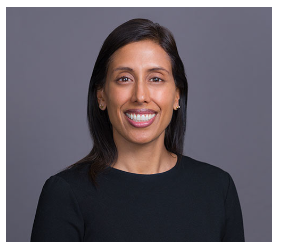In its Global Economic Outlook report for 2023 through 2025, Allianz reported that the company expects global inflation to fall to 4.3 percent in 2024, down two percentage points from 2023 levels. Despite some experts predicting disinflation next year, the current environment is still causing challenges for insurers.
“Insurance is an industry that heavily relies on predictability, and inflation introduces uncertainty into the equation, which is never good,” said Frank Sapio, regional head of claims in North America for Allianz Commercial. “As inflation rises or sinks, reserves become less accurate, which impacts the bottom line.”
During periods of rapidly changing inflation, Sapio said claims department are often constantly adjusting case reserves while actuaries are adjusting bulk reserves.
“It is a complex process that takes a lot of communication between all involved,” he said, adding that on top of this, increased rates for insureds can lead to higher service-level expectations.
“If I am paying more for my insurance, shouldn’t I get better products and services?” he said. “From a consumer perspective, I can see the connection, but it just doesn’t work that way.”
Kevin Rampe, executive vice president and head of North America Claims at Chubb, said more properties could be at risk of being underinsured because property owners haven’t factored in the cost of inflation.
Beyond property, “we’re also seeing the impacts of inflation in casualty, and really, across the board,” he said. “I don’t think there’s a category of casualty that isn’t impacted.”
Sapio agreed that all lines of business will likely see an impact, adding that standard property and marine lines come to mind first due to increased material costs and longer periods of restoration. But even lines such as errors and omissions or general liability have been heavily impacted due to the increase in legal defense costs, he added.
“I cannot think of a line that has not been impacted by some form of inflation,” he said.
Indeed, beyond economic inflation, another form—social inflation—is a topic that has increasingly caused challenges for insurers, experts said. The National Association of Insurance Commissioners reported that social inflation is a term describing how insurers’ claims costs are increasing above general economic inflation. This is often attributed to a trend in growing litigation costs from plaintiffs seeking large sums of money in exchange for injuries.
 “That litigation environment is starting to bleed into some of our bigger countries [outside the U.S.] We’re keeping a very close eye on it.”
“That litigation environment is starting to bleed into some of our bigger countries [outside the U.S.] We’re keeping a very close eye on it.”
Nandini Mani, Chubb
“The ‘social’ aspect of the term represents shifting social and cultural attitudes about who is responsible for absorbing risk (the insurer or the plaintiff),” according to a report on NAIC’s website. “The varying demographic makeup of jury pools, an increasing public distrust of large corporations, and the influences of social media and legal marketing can all influence jury verdicts and awards.”
Nuclear verdicts are often cited as a contributing factor to this type of inflation, meaning jury verdicts that exceed $10 million in punitive and compensatory awards. Third-party litigation funding, or litigation funded by outside parties such as hedge funds, is another often-cited contributing factor.
“There is an unbelievable amount of social inflation in our casualty book, and we’re seeing this everywhere,” Rampe said. “Courts are awarding damages and verdicts that were previously unheard of, and we are seeing that pressure increasing exponentially.”
According to the NAIC, the lines of business most affected by social inflation include commercial auto—particularly in the trucking industry—professional liability, product liability, and directors and officers liability insurance. And this issue isn’t only concentrated in the U.S., either.
“While North America sees a lot of social inflation, I just want to note that we’re starting to see it outside of the U.S., too,” said Nandini Mani, executive vice president and head of claims for overseas general insurance at Chubb. “That litigation environment is starting to bleed into some of our bigger countries, and we’re keeping a very close eye on it.”
David Lovely, chief claims officer at The Hanover Insurance Group, said growing trends toward litigation funding and more frequent nuclear verdicts “will continue to complicate the liability claim arena and drive up those costs” in the new year.
“When you talk about the biggest challenges ahead, they include increased costs from inflation, as well as a casualty environment that is seeing an increase in the number and severity of the claims,” Rampe added. “We need to be sure that we’re prepared for whatever challenges the industry has for us so that we can serve our insureds.”





















 Water Leaks, Frozen Pipes Top List of Small Business Claims: The Hartford
Water Leaks, Frozen Pipes Top List of Small Business Claims: The Hartford  Viewpoint: Mapping Evolving Regulatory Terrain for MGAs, MGUs and Other DUAEs
Viewpoint: Mapping Evolving Regulatory Terrain for MGAs, MGUs and Other DUAEs  How One MGU Grew Fivefold When Capacity Fled Cat-Prone Property Markets
How One MGU Grew Fivefold When Capacity Fled Cat-Prone Property Markets  New York Times Sues Perplexity AI for ‘Illegal’ Copying of Content
New York Times Sues Perplexity AI for ‘Illegal’ Copying of Content 











